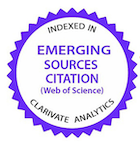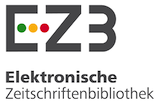INCLUSION OF GUAVA WASTES IN THE DIET OF EUROPEAN QUAILS
DOI:
https://doi.org/10.1590/1089-6891v16i324342Keywords:
Animal NutritionAbstract
This experiment was conducted to analyze the performance and carcass characteristics of European quail fed agroindustry residue of guava in substitution of corn. 140 birds were used, distributed in a completely randomized design. The treatments consisted of a control diet and four diets with levels of guava waste inclusion (2.5, 5.0, 7.5 and 10.0%) to a diet based on corn and soybean meal. There were no significant differences (P> 0.05) for the variables: weight gain, feed intake, feed conversion, feed efficiency, weight and carcass yield and prime cuts (breast, drumstick and thigh) wings, back , neck, head, feet and foodstuffs organs (heart, liver and gizzard). The guava waste can be used as alternative ingredient in the diets of European quail in the period of 16-38 days of age, up to the level of 10% inclusion without depressing the performance and yield of poultry carcasses.
Keywords: alternative food; carcass yield; Cortunix cortunix cortunix; performance; residue of agroindustry.
Downloads
Published
How to Cite
Issue
Section
License
Copyright (c) 2015 Brazilian Animal Science/ Ciência Animal Brasileira

This work is licensed under a Creative Commons Attribution 4.0 International License.
Authors who publish with this journal agree to the following terms:
- Authors retain copyright and grant the journal right of first publication with the work simultaneously licensed under a Creative Commons Attribution License that allows others to share the work with an acknowledgement of the work's authorship and initial publication in this journal.
- Authors are able to enter into separate, additional contractual arrangements for the non-exclusive distribution of the journal's published version of the work (e.g., post it to an institutional repository or publish it in a book), with an acknowledgement of its initial publication in this journal.
- Authors are permitted and encouraged to post their work online (e.g. in institutional repositories or on their website) prior to and during the submission process, as it can lead to productive exchanges, as well as earlier and greater citation of published work (See The Effect of Open Access).































